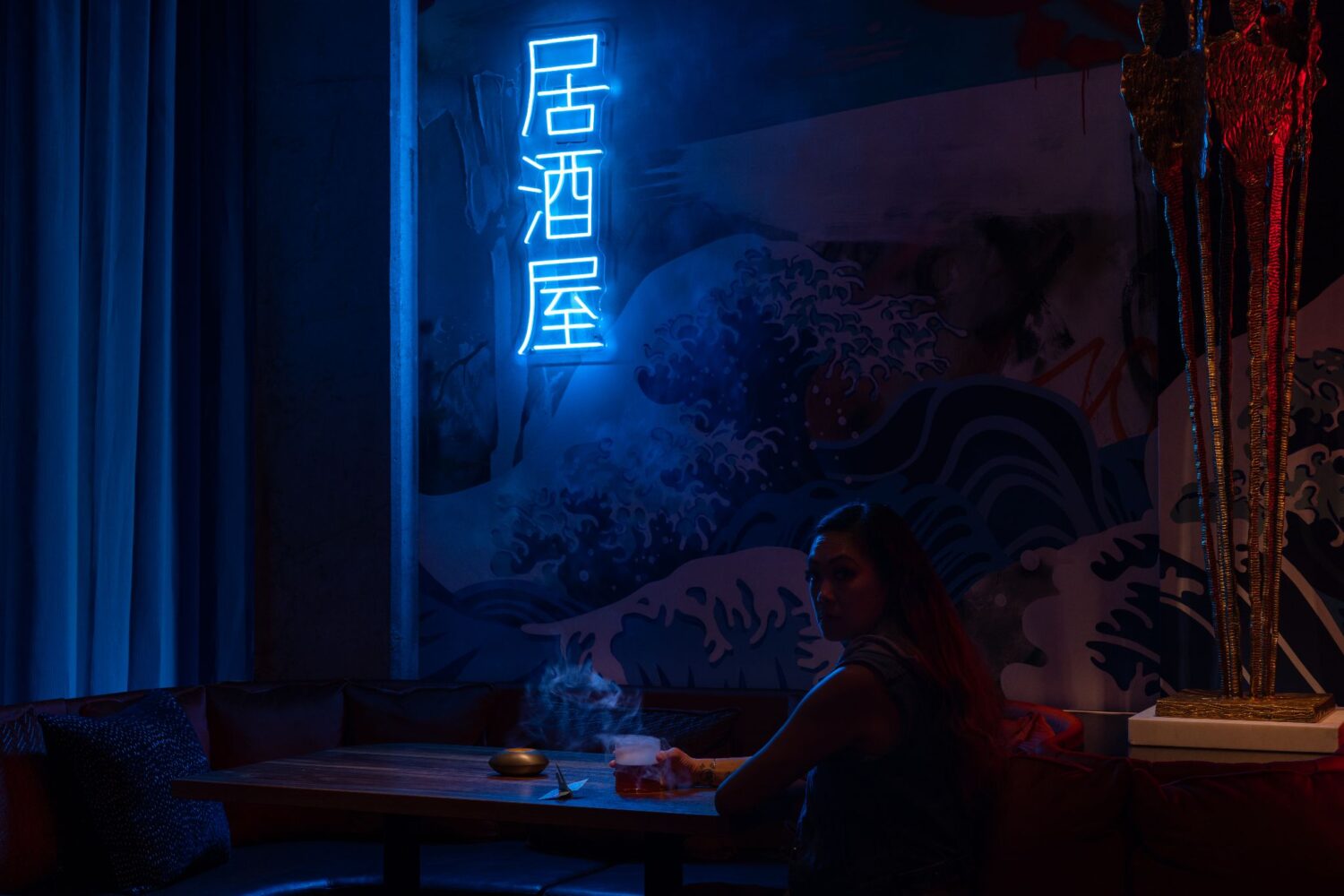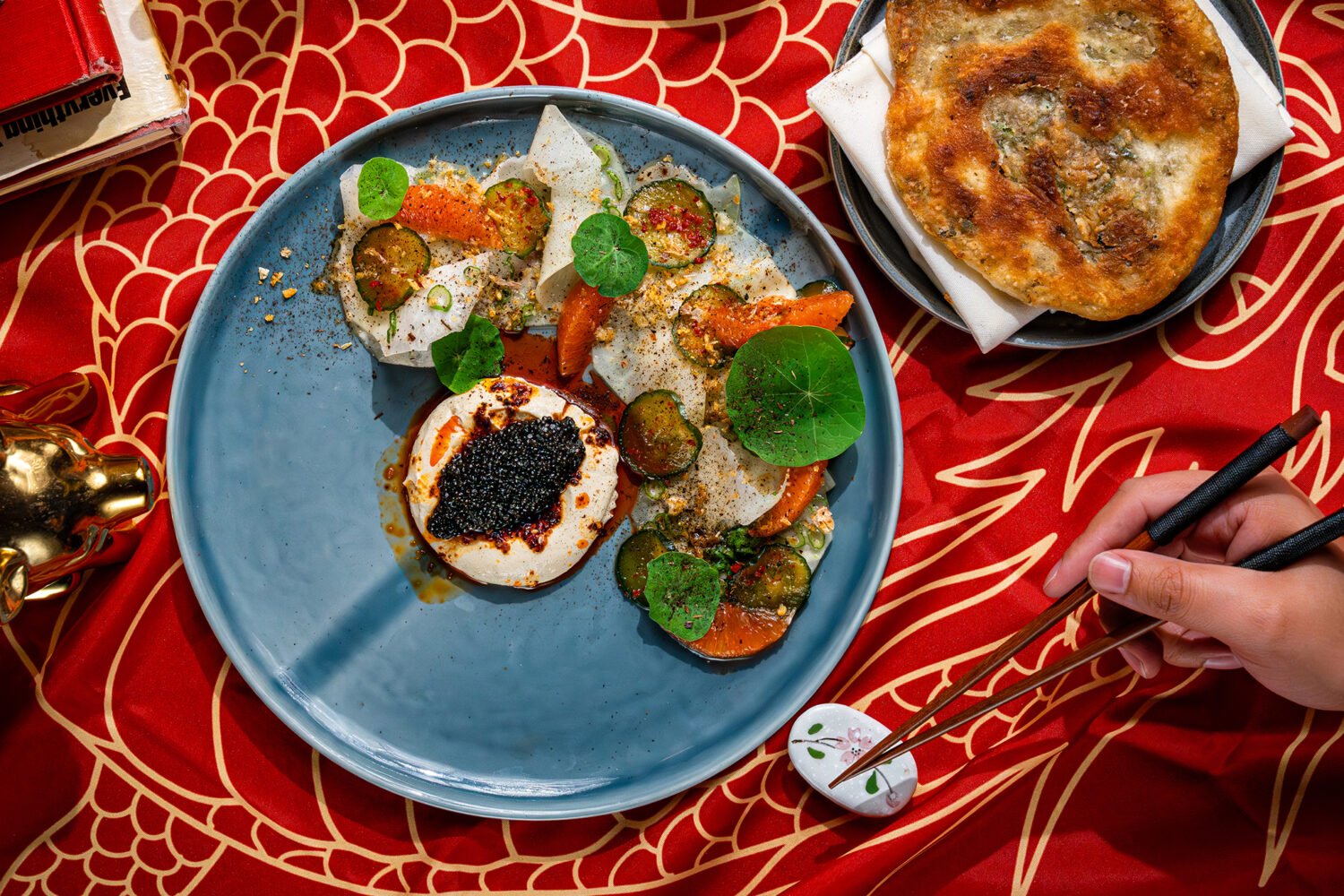Cashion’s Eat Place celebrates a landmark two decades on Tuesday—an anniversary that few Washington restaurants have achieved, let alone at their status. The Adams Morgan institution continues to excel and remain relevant, even as its peers fade, and new restaurants sprout up across the city.
The restaurant’s lineage is unusual in and of itself: chef Ann Cashion and business partner John Fulchino opened the doors in 1995, and hired current co-owners Justin Abad and chef John Manolatos, who was just a novice cook when Cashion began training him during the restaurant’s debut. Abad and Manolatos took over in 2007, preserving Cashion’s name and cooking philosophy.
We sat down with Cashion and Manolatos as they prepared to celebrate 20 years with a collaborative dinner. More than a look back, the pair offered insights into how Washington restaurants operate today—the danger of compromise, the difficulty of sourcing locally (yes, even in 2015), and how to create a restaurant that’s built to last decades.
What was the standout dish on Cashion’s opening menu in 1995?
Ann: The roast chicken was a huge statement dish, and also one of my favorites. It expressed what I think about cooking. We’d make the chicken to order, both white and dark meat. That’s a huge commitment—about 20 minutes—of a burner, space in your oven, and a cook’s attention. I’m always willing to do a dish in such a way that it’ll be its best. If we were sautéing cauliflower, we wouldn’t blanch it—we’d start raw, because that’s how you intensity the flavor. It used to drive everybody crazy.
John: There were pans on top of pans, ingredients we’d baby for 15 minutes. That’s the way everyone learned to cook here, which was a huge benefit. The learning curve was so drastic. We learned everything, all the time. It’s funny cooking now, and back then. It was all about how good the food was going to be. There wasn’t a ton of conversation about presentation.
Ann: It’s not about presentation, it’s all about flavor.
John: It wasn’t about how long things were going to take. There was no talk about price. It was just going to be the best cauliflower you had, or the best roast chicken. The three things chefs only talk about now—how it looks, how fast you can cook it, how cheap can you buy it for—those were never concerns.
Ann: It’s a great luxury to have the bottom line be so completely unimportant to you, for whatever reason, that you’re willing to pursue cooking in that way. It wasn’t like we never made money—we did—but we were never going to be extremely profitable with that structure. And that was fine with me. It was a true labor of love, and we got all the satisfaction that goes along with that.
Can you pinpoint what has changed in the restaurant industry, so as you say, it’s all about price, speed, and presentation?
Ann: It has become increasingly difficult to make money in the restaurant business. There are more restaurants for people to choose from. Even if you come on the scene and make a big splash, how long is that going to last? The price of food never goes down, let’s put it that way. And the price of labor doesn’t either—it’s going to take a huge jump in the next few years, if I had to guess. So basically the cost structure is less generous, and you’re forced to consider those things more.
One of the interesting things is that as the commitment to organic ingredients and sustainability has become front and center in the public mind, more and more professional chefs and restaurants want to be a part of it. I frankly think there’re a lot of them that don’t really walk the talk, and I can tell the difference. I don’t think everyone can, and the restaurants can get away with it. So yes, you might be charging the same price as here [at Cashion’s], but these restaurants are making more money because they’re buying cheaper stuff.
John: I have strong feelings about that—being true and honest about everything that you do. And we were shown the way to do it.
Ann: I worked with Nora [Pouillon], and she showed me how to do it. I often think about Nora, the challenges then of buying seasonally and locally. The logistics were pretty demanding, and if I hadn’t worked with Nora, it would have taken me a long time to figure it out.
Is it fairly easy now for restaurants to buy local and organic?
Ann: In terms of getting ingredients into the kitchen, yes. But the difficulty comes in the form of situations like this: the farms aren’t going to deliver every day, so you have to be nimble with your menu. If you want asparagus in a dish, and you didn’t buy enough, and the farm isn’t going to come again until next Thursday, then the menu has to change. It’s not easier if you really do it.
John: There’s even a big difference with the word ‘local’ itself. It’s like Perdue—there’s a Perdue Farm in Maryland, is that local chicken? It’s still logistically hard with some of the real small farmers. Bev [Eggleston] of EcoFriendly foods, for instance—sometimes delivers at 11 o’clock at night, because he has one employee. So do you keep the doors open until 11 to accept the whole animal, or do you get it from butchers who have a lesser grade of pork, who deliver at normal times, and have it broken down a little more? The price cheaper, because they’re growing more.
Switching gears a bit, do you have an all-time favorite Cashion’s regular?
John: We’d get in trouble, there are so many.
Ann: I don’t think I can. Actually, yes, but she’s no longer with us. Rose McCullough. She was an amazing food lover and brilliant woman. She was here twice a week, sometimes by herself. Whatever new thing she saw on the menu, she’d order. She was very interested in how we were doing things. She was the ideal diner.
How about a favorite VIP?
Ann: Bill Clinton was a cool night. Getting to see him in a [small] room like this was very interesting.
John: It was pre-9/11, there wasn’t security everywhere.
Ann: People just couldn’t get enough of him. It took him 20 minutes to get to the door, because everyone wanted a piece of him, and he wanted to give everybody a piece.
Do you remember what he ate?
Ann: I do, because Secret Service was all over the kitchen right after he ordered. He ate just exactly what you’d expect—a pork chop.
Complete the sentence: “Cashion’s has taught me…”
John: I would say Cashion’s has taught me to really care for people you work with, and enjoy people who work hard for you. There’s a lot of honesty and truth in a kitchen—it’s a very leveling field. There’s a lot of togetherness. It keeps my hope alive, in a cheesy Hallmark kind of way. You don’t let anyone slide. You don’t just get to be part of the club. You can’t buy your way in.
Ann: What I learned is part of my character. My family would stay I’m stubborn. It wasn’t always seen in the best light. The Cashion’s experience really reinforced the fact that it’s never good to compromise your principles and your values. Even though it’s a difficult thing, people respect you. All the things we did, which a lot of people saw as self-inflicted wounds—whole animals, pissing people off because we only had ten steaks—it was completely worth it, at least for me. Compromising on that feels like failure.
If someone came by today and said ‘I’m opening a restaurant. I want it to be around in 20 years.’ What advice would you give?
Ann: If you want it to be around in 20 years, you have to be very personally involved. People can sense the presence. People will say, ‘Oh that restaurant feels corporate,’ and they’ll even say it about restaurants that aren’t corporate. That’s probably because the owner’s presence is further afield than it should be. You have to be willing to be present.
John: I really agree with that, but I’ll be a little more cynical and say I’d like to meet this person. I don’t know when that question has been asked in the last ten years. I don’t know who’s in it for the long haul right now. As soon as one place opens, there’s another one already in the works. Here, there was a good bit of time—four or five years—before Johnny’s [Half Shell] opened. And then it was only one other restaurant. What made the Half Shell happen was me being here, the symbiotic relationship.
How did your relationship evolve, and Ann, what did you see in John that allowed you to trust him with your restaurant?
Ann: I saw a lot of drive, a lot of instinctual food knowledge, and a lot of desire to excel in the kitchen. It was apparent from the first day. He understood the type of cooking I wanted to do. I had a lot of cooks—two that came out of Kinkead’s, for example—and they were into putting a lot of stuff on the plate. They were line cooks in that classic sense—they thought braising was boring. I really appreciated was how eager John was. He’s a perfectionist, and hard on himself, and if he didn’t do it well I could tell he was frustrated.
John: I’d always wanted to be in the food business. Both of my grandfathers were the cooks in their homes, and I was the oldest grandkid. I really wanted to go to culinary school, but there’s no way my father was going to pay for it. My grandfather was a busboy, so my dad was like ‘no way, you’re not stepping backwards.’ So I came here, and it worked out perfectly. There was no staff, plenty of energy. The food made perfect sense, because as Ann said, I grew up eating lamb on a spit. We’d eat salt cod. Our olives had pits in them. My grandfather made his own wine in Baltimore. Those things were close to what Ann was trying to do here, and it made a lot of sense.
Where would you like to see Cashion’s in 20 years?
John: I don’t necessarily need it to be known as a place that’s been open for 40 years and cooking great food, but I need the customers to keep enjoying what we’ve done. We’re still going to have the same objectives in the kitchen, and I’d like that to be appreciated. We still cook chicken to order. I’m not that inventive sometimes, so I want to keep the same cooking philosophy—through all of these trends, all of these other things, quality is still going to rise above everything.
Ann: I don’t think it’s that you’re not inventive. There’s a certain personality we share. I’m not the first person to cook, and I’m not going to be the last. I look at it as a trajectory of chefs—it’s like the long gray line at West Point. When you graduate, you’re the next part of the long gray line. I call it the long white line: those of us who really love traditional food, and who want keep traditions alive. Other people can’t stand to be in the line, and that’s a different personality type. It’s not without value, and it certainly has had a lot of impact. But it’s not for me, and it’s not what I do, or what you do. It doesn’t mean we’re not inventive. What I’m hoping, 20 years from now, is that you still know how to cook traditional food.



















